Japanese Money Etiquette for Special Occasions: Weddings, Funerals, and More Explained for Expats
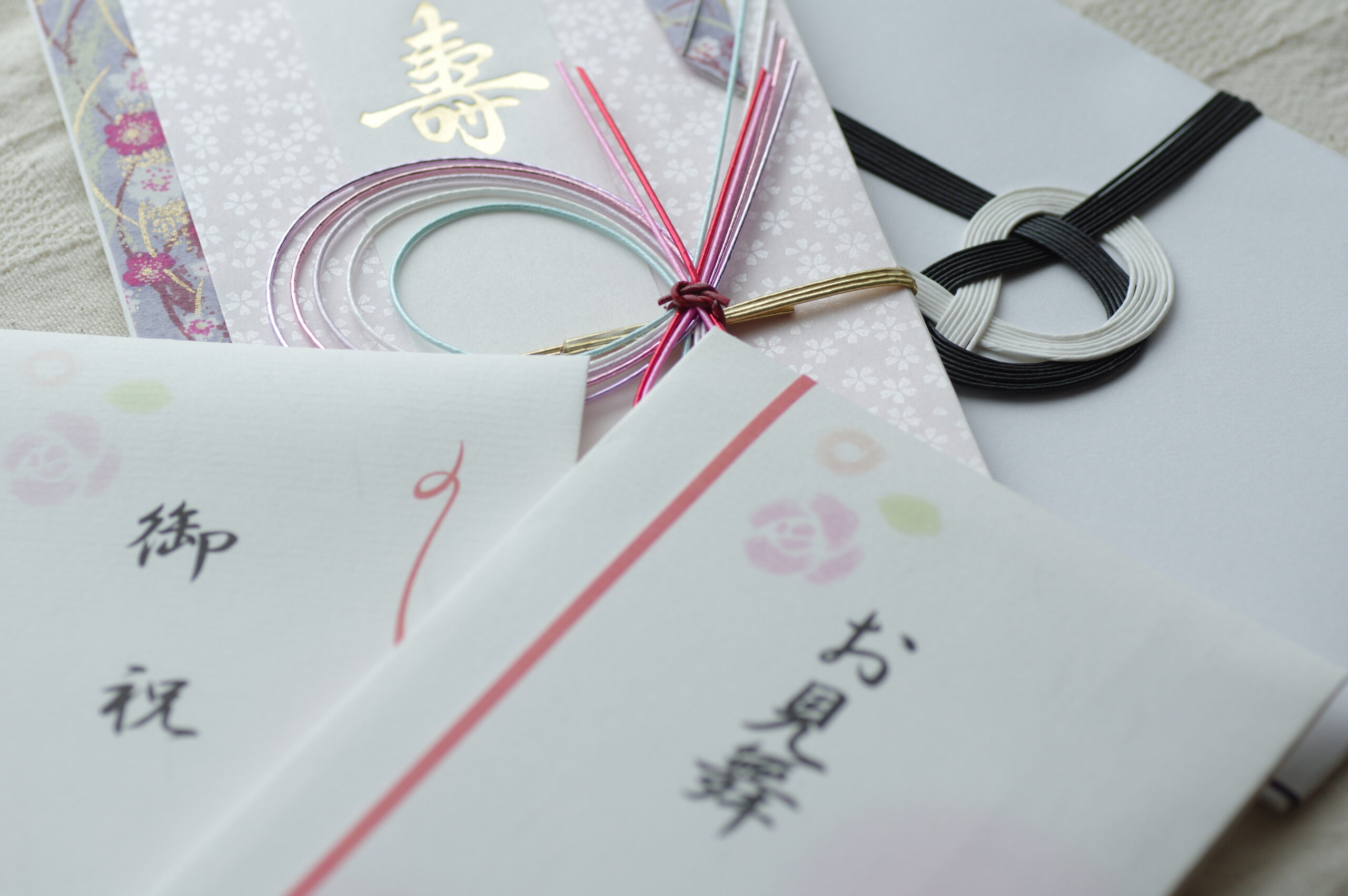
How much money should I give at a Japanese wedding? What about a funeral? And what if I get invited to a baby shower or graduation ceremony—do I need to bring cash too?” So many expats feel anxious about giving the wrong amount or using the wrong envelope at Japanese events.
The truth is, understanding Japanese gift money etiquette isn’t just about numbers—it’s about showing respect in the right cultural context.
In this article, we’ll walk you through the key money customs for weddings, funerals, and other important occasions like baby gifts, school milestones, and memorial services. You’ll learn not only what to give, but why it matters—and how to avoid common mistakes that could cause confusion or offense.
What Is Gift Money Etiquette in Japan? – Understanding the Cultural Foundations
Why Money Is Given Instead of Physical Gifts
In Japanese culture, monetary gifts are preferred over physical items for significant life events. This practice, known as “ご祝儀” (goshūgi) for celebratory occasions and “香典” (kōden) for funerals, emphasizes the giver’s sincerity and consideration. The amount and presentation of the money convey respect and the nature of the relationship between the giver and recipient.
Gift Money as a Form of Social Bonding in Japan
Monetary gifts serve as a means of reinforcing social bonds. They are not merely financial contributions but symbolize the giver’s support and participation in the recipient’s life event. This tradition reflects the communal aspect of Japanese society, where personal milestones are shared and celebrated collectively.
Regional and Generational Differences in Practice
While the core principles of gift money etiquette are consistent, variations exist across regions and generations. For instance, the standard amount given may differ between urban and rural areas, and older generations might adhere more strictly to traditional practices. Understanding these nuances is crucial for appropriately navigating gift-giving situations in Japan.
Japanese Wedding Money Etiquette: How Much to Give and How to Prepare
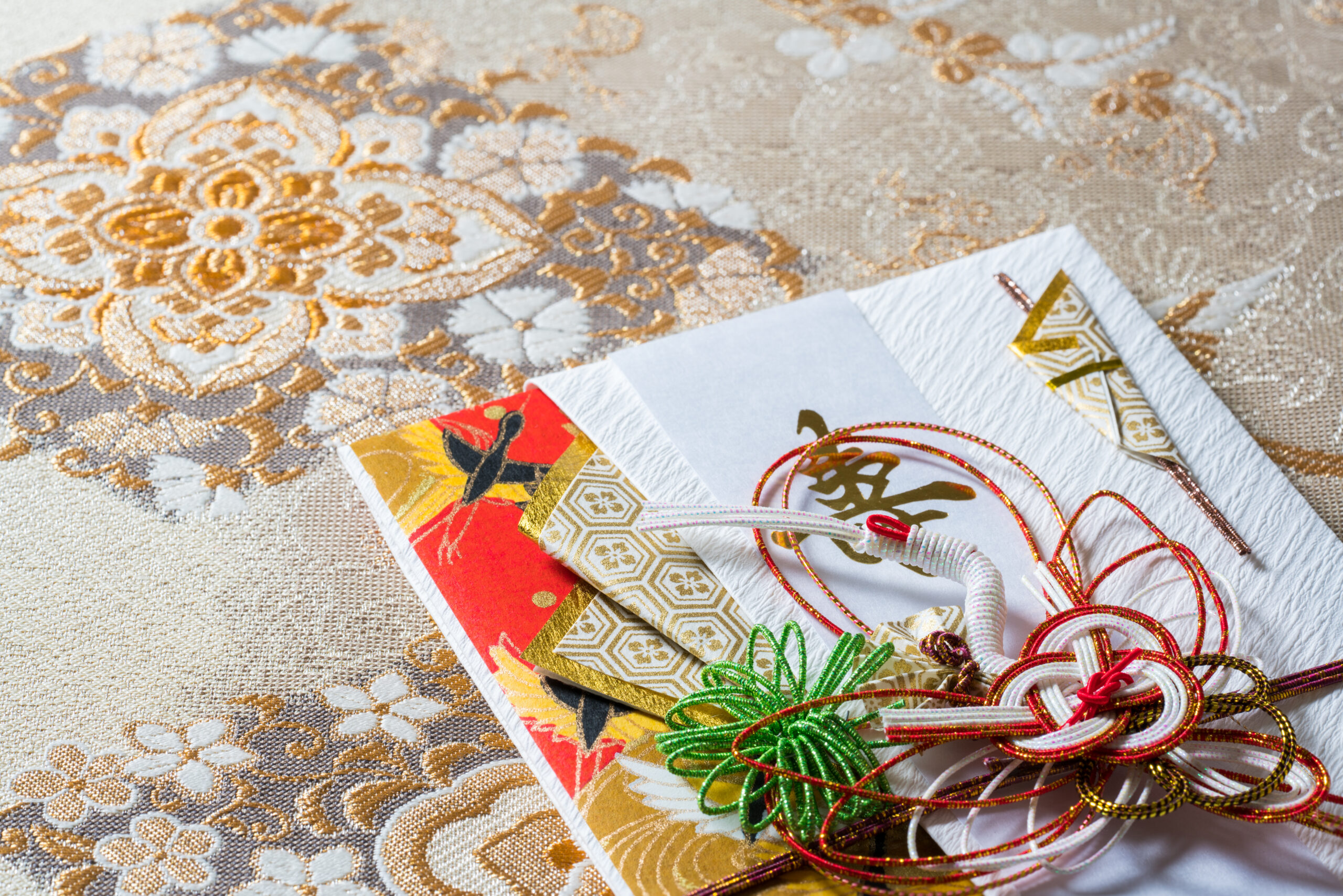
Attending a wedding in Japan involves more than just celebrating the union of two people; it also requires understanding and adhering to specific cultural practices, especially concerning monetary gifts. For expatriates, navigating these customs can be challenging. This guide aims to clarify the expectations surrounding wedding gift money in Japan, helping you participate respectfully and meaningfully.
How Much Should You Give at a Japanese Wedding?
In Japan, it is customary to give cash gifts at weddings, known asご祝儀 (goshūgi). The amount typically depends on your relationship with the couple:
- Friends or Colleagues: ¥30,000 is standard.
- Close Friends or Relatives: ¥50,000 is common.
- Immediate Family Members: ¥50,000 to ¥100,000 is appropriate.
It’s important to avoid amounts that are even numbers or contain the digit four, as these are associated with bad luck. The numbers 4 and 9 are avoided because 4 (四, shi) sounds like “death” (死, shi) and 9 (九, ku) sounds like “suffering” (苦, ku) in Japanese, both of which are considered inauspicious.
The amount of gift money (ご祝儀, goshūgi) can vary depending on the region in Japan. In some areas, giving more or less than the national average is common, based on local customs, venue prestige, or family traditions. Always check with a local if unsure.
Choosing the Right Envelope: Shūgi-bukuro for Weddings
The monetary gift should be placed in a special envelope called a 祝儀袋 (shūgi-bukuro). These envelopes are often decorated with 水引 (mizuhiki), which are ceremonial cords symbolizing affection and togetherness.
How to Write Your Name and Prepare the Bills Properly
When preparing the shūgi-bukuro:
- Outer Envelope: Write the purpose of the gift, such as “寿 (kotobuki),” meaning “congratulations,” at the top center.
- Inner Envelope: Include the amount of money and your name.
- Bills: Use new, crisp bills to symbolize a fresh start for the couple.
What to Say When You Hand Over the Money
When presenting the shūgi-bukuro at the reception, it’s customary to say:
- “結婚おめでとうございます (kekkon omedetō gozaimasu)”: “Congratulations on your marriage.”
- “本日は招いていただき、ありがとうございます (honjitsu wa manekite itadaki, arigatō gozaimasu)”: “Thank you for inviting me today.”
These expressions convey your happiness for the couple and gratitude for being included in their special day.
Japanese Funeral Money Etiquette: Proper Condolence Money and Practices
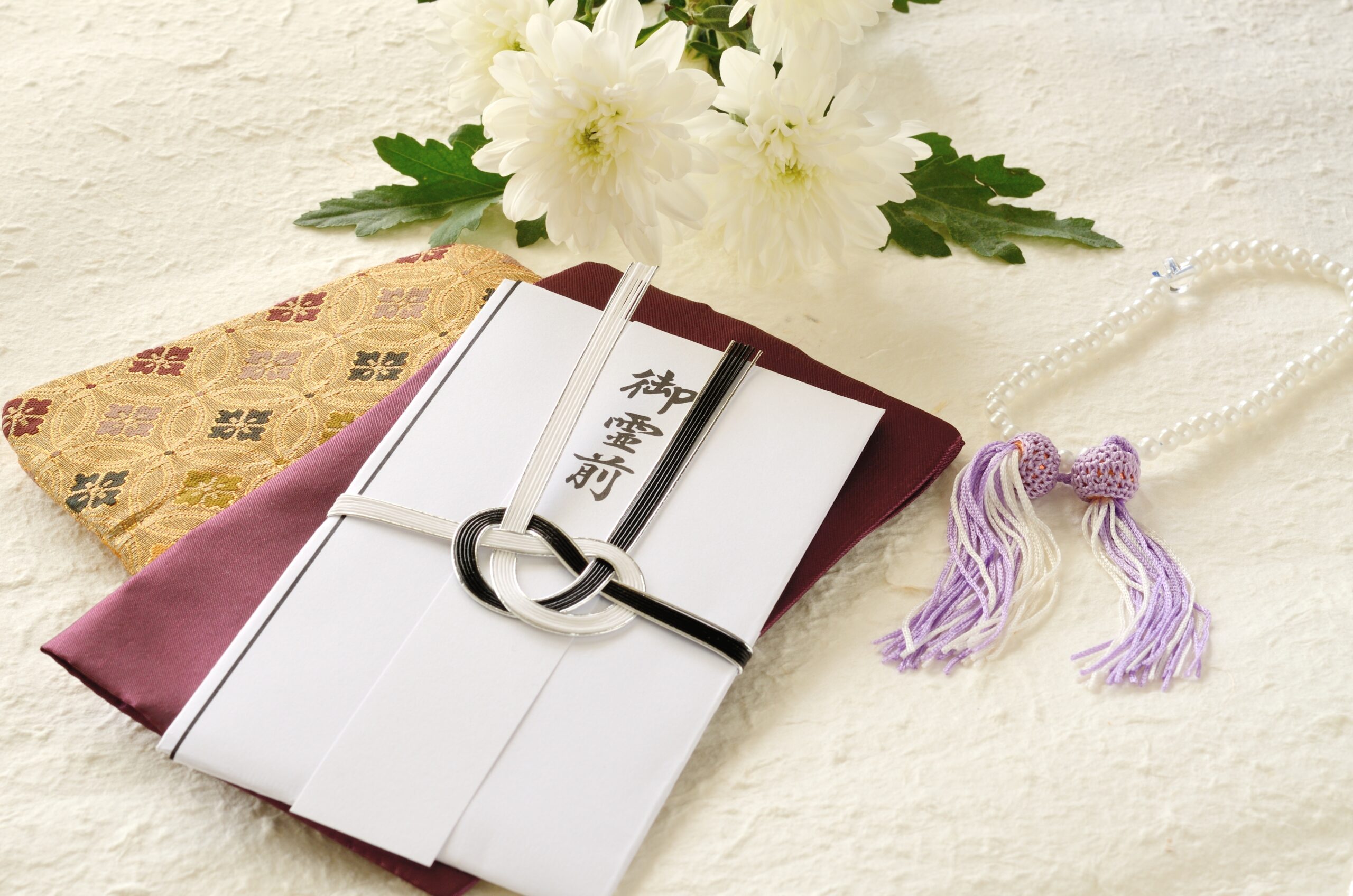
How Much Kōden (Condolence Money) Should You Give?
In Japan, giving condolence money (香典, kōden) is a traditional way to express sympathy to the bereaved family. The amount varies depending on your relationship to the deceased, your social status, and the type of ceremony.
For example, if you are a friend or coworker, ¥5,000 to ¥10,000 is standard. If you are a relative, the range can go from ¥10,000 to ¥30,000, depending on your closeness and age. Senior relatives or company representatives may offer ¥30,000 to ¥50,000 or more.
Avoid giving overly large sums unless culturally appropriate, as it might embarrass the grieving family or place pressure on others to give more. It’s also important to avoid amounts like ¥4,000 or ¥9,000, as the numbers 4 and 9 are linked to death (死, shi) and suffering (苦, ku), and are considered unlucky in this context.
Amounts by Relationship and Type of Ceremony
The appropriate amount of kōden (香典)—a condolence gift given at Japanese funerals—varies based on your relationship to the deceased and the type of ceremony.
For Friends and Coworkers
- Standard Funeral (葬式, sōshiki):
- Friends or coworkers: ¥5,000 is generally acceptable.
- Closer relationships: If you had a closer bond with the deceased or their family, ¥10,000 is more appropriate.
- Professional context: When attending on behalf of a company, it’s common for the company to prepare a collective kōden of ¥10,000 to ¥30,000, delivered by a designated representative.
- For Buddhist Memorial Services (法事, hōji):
- Typical range: ¥3,000–¥10,000, depending on your relationship and local customs.
For Relatives
The amount typically increases with closer kinship and your age or position in the family:
- Nephew/Niece: ¥10,000–¥20,000
- Sibling or Parent: ¥30,000–¥50,000
- Spouse’s Relative: Often ¥10,000–¥30,000
Company Contributions
- Group collection: It’s common for companies to organize a group kōden.
- Individual contributions: Employees who had a personal relationship with the deceased or their family may also choose to contribute separately.
Regional and Religious Considerations
Be aware that regional customs and religious traditions can influence both the amount and manner of giving kōden. If you’re uncertain, it’s advisable to consult a trusted local or colleague for guidance.
Choosing the Right Envelope for Funerals (Kōden Bukuro)

In Japanese funeral customs, choosing the correct envelope for condolence money—known as 香典袋 (kōden bukuro)—is essential to show proper respect. These envelopes are distinct from those used for weddings and other happy events, both in design and symbolism.
A kōden bukuro is typically white with black-and-white strings (水引, mizuhiki) tied in a special knot called a 結び切り(musubi-kiri). This knot symbolizes a one-time event that should not be repeated—appropriate for somber occasions like funerals. The color combination and knot style should never be festive or colorful, as that would be inappropriate and even offensive in this context.
There are variations in envelope styles depending on the religious affiliation of the deceased’s family:
- Buddhist funerals, the most common in Japan, usually require envelopes labeled with the phrase 御霊前 (goreizen) or 御香典 (gokōden).
- For Shinto services, 御玉串料 (otamagushi-ryō) is more appropriate.
- Christian services might use 御花料 (ohanaryō) or sometimes just a simple Condolence.
Using the wrong envelope for the religious context can come across as careless or disrespectful. It’s always a good idea to discreetly ask someone familiar with the ceremony—such as a colleague or mutual acquaintance—if you’re not sure.
When in doubt, choosing a plain white envelope with black-and-white strings and avoiding elaborate or colorful designs is the safest and most respectful option.
What Type of Bills to Use and Why It Matters
When preparing kōden, it’s customary to use used bills rather than new ones. This practice stems from the belief that presenting crisp, new bills implies anticipation of the death, which is considered inappropriate. Using gently used bills conveys sincerity without suggesting prior expectation.
Additionally, it’s advisable to avoid amounts that include the numbers 4 and 9, such as ¥4,000 or ¥9,000. In Japanese, the number 4 (shi) sounds like “death” (死), and 9 (ku) sounds like “suffering” (苦), both of which are associated with misfortune. Therefore, these numbers are considered unlucky in the context of condolence offerings.
What to Say or Write When Offering Condolences
When presenting kōden, it’s important to express your sympathy appropriately. Common phrases include:
- 「ご愁傷様です」 (Goshūshō-sama desu) – “My condolences.”
- 「お悔やみ申し上げます」 (Okuyami mōshiagemasu) – “I offer my deepest sympathies.”
These expressions convey respect and empathy to the bereaved family. It’s customary to offer the envelope with both hands and a slight bow, demonstrating humility and reverence.
If you’re unsure about the appropriate amount or customs, it’s always respectful to consult with a local acquaintance or colleague familiar with regional practices.
Special Occasions Beyond Weddings and Funerals: Births, School Events, and More
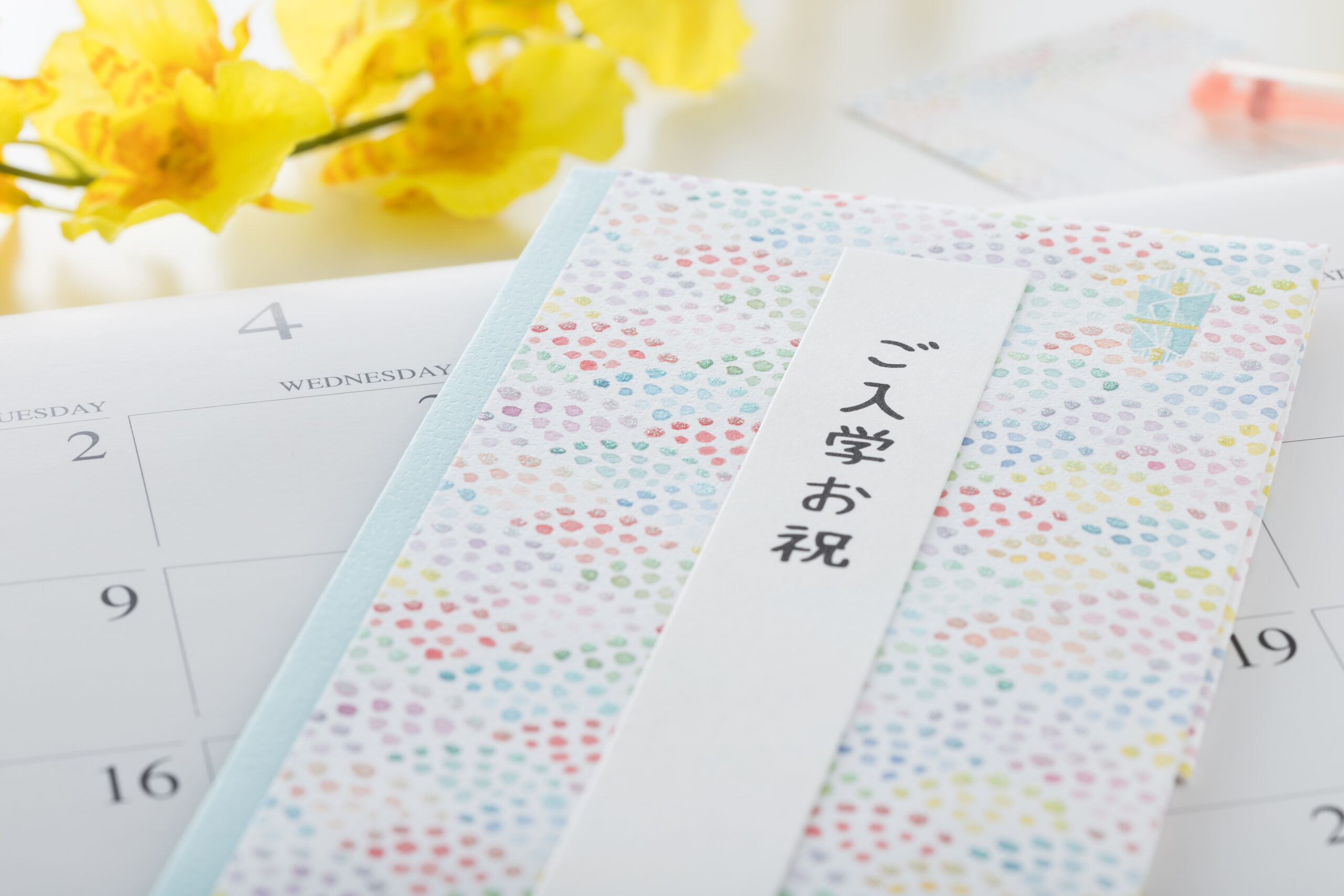
Baby Gifts: When and How Much to Give
In Japan, celebrating the birth of a child often involves giving gift money, known as “oshugi” (お祝儀, oshūgi). The amount typically ranges from ¥5,000 to ¥10,000, depending on your relationship with the family. Close friends and relatives might give more, while acquaintances may opt for a modest amount.
It’s customary to present the money in a decorative envelope called “祝儀袋” (shūgi-bukuro), adorned with red and white colors symbolizing happiness and celebration. Including a short congratulatory message, such as “ご出産おめでとうございます” (go-shussan omedetō gozaimasu) meaning “Congratulations on the birth,” adds a personal touch.
Additionally, it’s common to give a return gift, or “お返し” (okaeshi), from the baby’s family to express gratitude. This gift is usually worth half the value of the received gift and is given after the baby’s first month.
In recent years, shūgi-bukuro (祝儀袋) have evolved beyond traditional designs. Modern versions feature a variety of colors, patterns, and materials, including minimalist styles, floral motifs, and even character-themed designs. These contemporary envelopes allow gift-givers to express personal taste while still adhering to cultural etiquette. They are widely available at stationery stores, department stores, and online marketplaces across Japan.
Money Etiquette for School Admissions, Graduation, and Coming-of-Age Ceremonies
Educational milestones are significant in Japanese culture, and monetary gifts are a traditional way to celebrate these events.
- School Admissions and Graduations:
- When a child enters or graduates from school, it’s customary to give “入学祝い” (nyūgaku iwai) or “卒業祝い” (sotsugyō iwai), respectively. The amount varies based on your relationship with the child but typically ranges from ¥5,000 to ¥10,000. Presenting the money in a shugi-bukuro with appropriate celebratory colors is standard practice.
- Coming-of-Age Ceremonies:
- At age 20, individuals celebrate “成人の日” (Seijin no Hi), marking their transition into adulthood. It’s customary to give “成人祝い” (seijin iwai), with amounts ranging from ¥10,000 to ¥20,000, depending on your closeness to the individual. Again, using a shugi-bukuro with auspicious colors is appropriate. Including a message like “ご成人おめでとうございます” (go-seijin omedetō gozaimasu), meaning “Congratulations on coming of age,” is a thoughtful gesture.
Although Japan officially lowered the age of adulthood from 20 to 18 in April 2022, most municipalities continue to hold Coming-of-Age Day (Seijin no Hi) ceremonies for those turning 20. This tradition persists because 20 remains the legal age for activities such as drinking and smoking, and many 18-year-olds are occupied with university entrance exams or job hunting. Therefore, regional customs vary, and it’s advisable to check local practices to determine the appropriate age group for these ceremonies.
Other Occasions: Illness, Housewarming, Anniversaries
Monetary gifts are also given during other life events:
- Illness:
- When someone is hospitalized or ill, it’s customary to give “お見舞い” (omimai). The amount typically ranges from ¥3,000 to ¥10,000, depending on your relationship. It’s important to avoid giving amounts with the number 4 (“shi”) or 9 (“ku”), as they are associated with death and suffering, respectively.
- Housewarming:
- For someone moving into a new home, “新築祝い” (shinchiku iwai) is given. Amounts vary but generally range from ¥5,000 to ¥10,000. Gifts can also be in the form of household items instead of money.
- Anniversaries:
- Celebrating significant anniversaries, such as wedding anniversaries, may involve giving “記念品” (kinenhin) or commemorative gifts. The value and type of gift depend on the nature of the anniversary and your relationship with the recipients.
In all these occasions, presenting the gift in an appropriate envelope and including a heartfelt message enhances the gesture’s sincerity and aligns with Japanese cultural practices.
How to Choose and Prepare the Right Envelope: The Role of Shugi Bukuro and Koden Bags
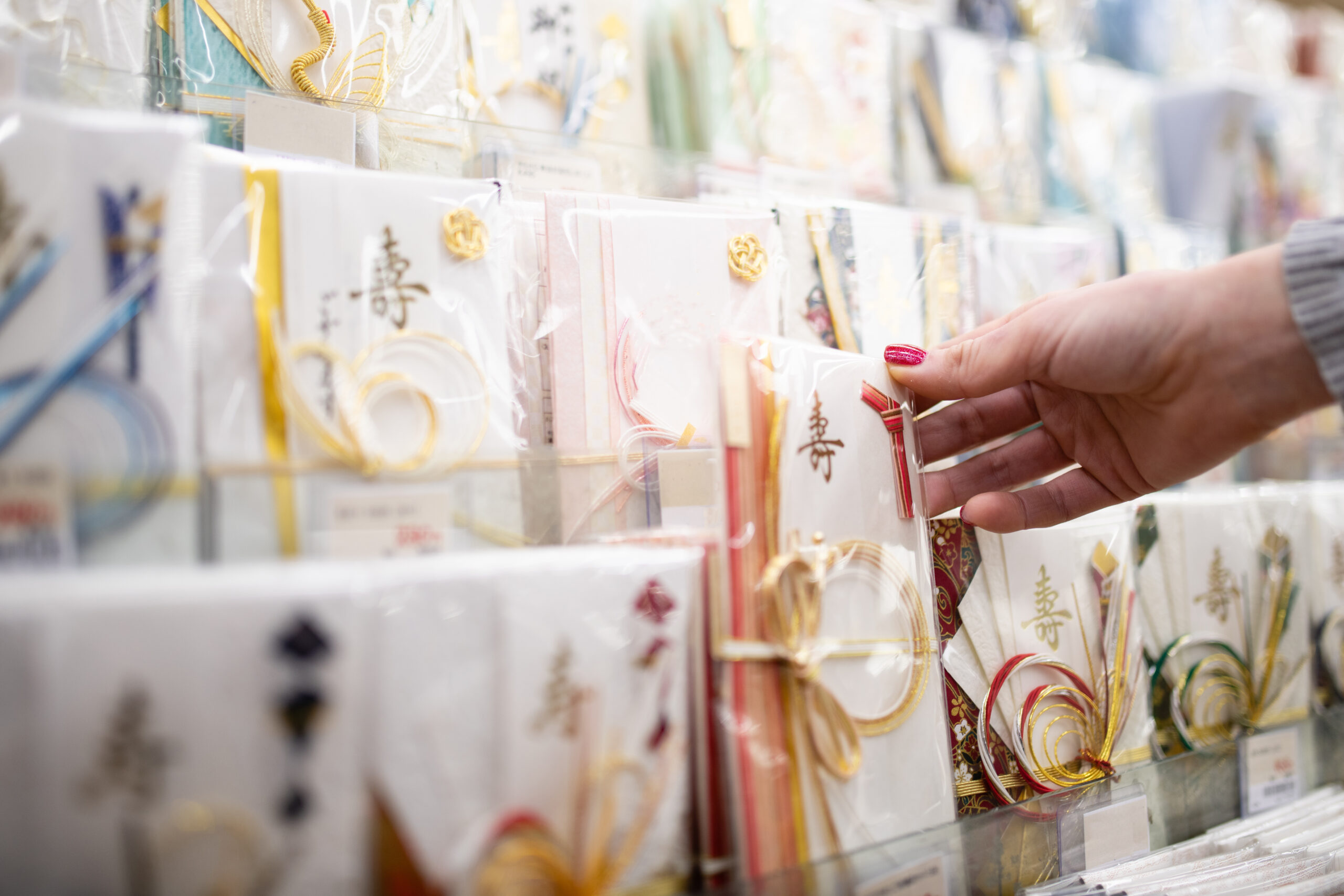
What Is a Shugi Bukuro? When to Use It
A 祝儀袋 (shūgi-bukuro) is a decorative envelope used in Japan to present monetary gifts during celebratory occasions such as weddings, births, and graduations. These envelopes are typically adorned with 水引 (mizuhiki), which are decorative cords made from twisted paper. The colors and styles of mizuhiki vary depending on the occasion. For joyful events, red and white or gold and silver combinations are common, symbolizing happiness and prosperity. The complexity of the mizuhiki knot often reflects the formality of the event; more intricate designs are used for significant occasions like weddings.
When selecting a shūgi-bukuro, it’s important to consider the amount of money you plan to give. Larger sums typically warrant more elaborate envelopes with higher-quality paper and intricate mizuhiki designs. These envelopes can be purchased at stationery stores, convenience stores, or online retailers.
Understanding Koden Envelopes and Their Symbolism
For somber occasions like funerals, a different type of envelope called a 香典袋 (kōden-bukuro) is used to offer condolence money. These envelopes are usually white and feature subdued colors such as black and white or silver and white mizuhiki, reflecting the solemnity of the event. The design and inscriptions on the envelope may vary depending on the religious practices of the deceased’s family.
It’s customary to use older or slightly worn bills when giving kōden, as new bills might imply that the giver anticipated the death, which is considered inappropriate. The money should be placed in the inner envelope with the portrait side facing down and the top of the bill aligned with the bottom of the envelope. When folding the outer envelope, the top flap should be folded over the bottom flap, symbolizing the act of mourning.
Writing Your Name, Folding the Bills, and Other Rules
When preparing either a shūgi-bukuro or kōden-bukuro, certain etiquettes should be followed:
- Writing Your Name:
- Your name should be written vertically on the front of the envelope, below the mizuhiki. For shūgi-bukuro, use black ink, while for kōden-bukuro, gray ink is preferred to signify mourning.
- Folding the Bills:
- In shūgi-bukuro, fold the bottom flap over the top flap, symbolizing happiness flowing upward. In kōden-bukuro, fold the top flap over the bottom flap, representing sorrow descending.
- Including a Message:
- It’s thoughtful to include a short message or note inside the envelope. For celebratory occasions, phrases like “ご結婚おめでとうございます” (gokekkon omedetō gozaimasu) meaning “Congratulations on your marriage” are appropriate. For funerals, expressions such as “ご愁傷様です” (goshūshō-sama desu) meaning “My deepest condolences” are commonly used.
You can find gray ink pens or calligraphy brushes at stationery stores, bookstores, or even convenience stores in Japan, especially in the section for ceremonial items. They are often labeled for use with condolence envelopes (香典袋).
Where to Buy Proper Envelopes and What to Avoid
Proper shūgi-bukuro and kōden-bukuro can be found at various retail outlets, including stationery stores, supermarkets, and convenience stores. When purchasing, ensure that the envelope design aligns with the occasion. Avoid using envelopes with inappropriate colors or designs that do not match the event’s tone. For instance, using a brightly colored envelope for a funeral would be considered disrespectful.
In recent years, a variety of modern and stylish envelope designs have become available, catering to different tastes while still respecting traditional customs. However, it’s essential to choose designs that maintain the appropriate level of formality for the occasion.
By understanding and adhering to these practices, you demonstrate respect and cultural sensitivity, which are highly valued in Japanese society.
Common Mistakes to Avoid When Giving Money in Japan

Giving the Wrong Amount or Inappropriate Bills
In Japanese gift-giving, the amount and presentation of money carry significant cultural meanings. Avoid giving amounts that include the numbers 4 (四, shi) and 9 (九, ku), as they are associated with death and suffering, respectively. For instance, amounts like ¥40,000 or ¥90,000 are considered inauspicious. Additionally, it’s customary to give money in odd numbers, symbolizing indivisibility and unity, especially in weddings. Therefore, amounts like ¥30,000 are preferred over ¥20,000. When giving cash, use crisp, new bills for celebratory occasions and slightly worn bills for condolences, as new bills might imply anticipation of the event.
Using the Wrong Envelope for the Occasion
Selecting the appropriate envelope is crucial. For joyful events like weddings or births, use a 祝儀袋 (shūgi-bukuro), which is often adorned with red and white or gold and silver mizuhiki cords. For somber occasions like funerals, a 香典袋 (kōden-bukuro) with subdued colors such as black and white is appropriate. Using the wrong envelope can be seen as disrespectful. These envelopes are available at stationery stores, supermarkets, and convenience stores across Japan.
Cultural Missteps in Language or Gestures
When presenting monetary gifts, it’s customary to offer the envelope with both hands, accompanied by a respectful bow. For celebratory occasions, phrases like “ご結婚おめでとうございます” (gokekkon omedetō gozaimasu) meaning “Congratulations on your marriage” are appropriate. For funerals, expressions such as “ご愁傷様です” (goshūshō-sama desu) meaning “My deepest condolences” are commonly used. Avoid opening the envelope in front of the recipient, as it’s considered impolite.
Being mindful of these customs demonstrates respect and understanding of Japanese cultural practices and will help ensure that your actions are perceived as sincere and consistent with your intentions.
You Might Also Be Interested In:
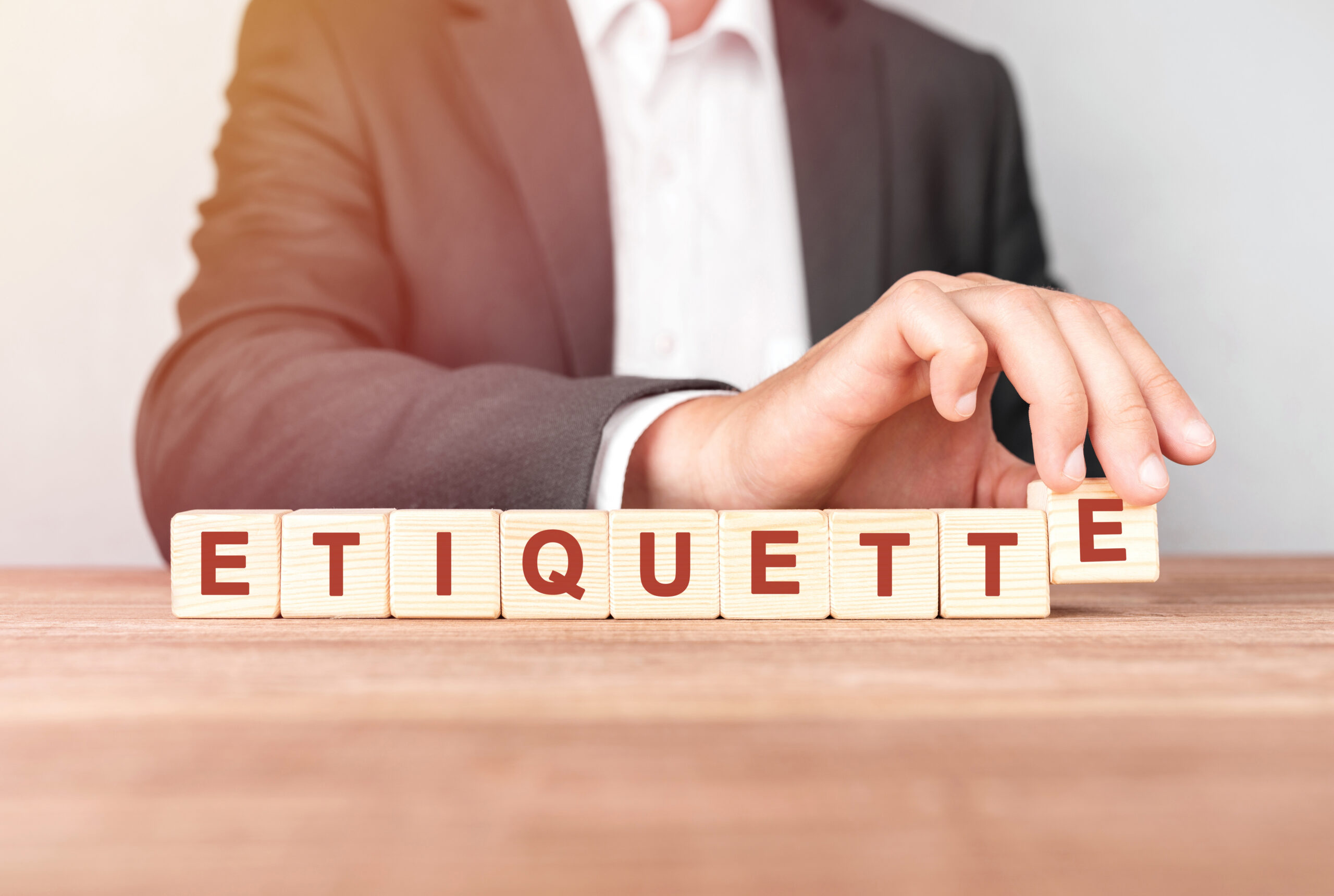
Summary: The Heart of Japanese Gift-Giving Culture
Gift-giving in Japan is a deeply rooted tradition that reflects the values of respect, harmony, and social obligation. Whether celebrating joyous occasions like weddings and births or offering condolences during times of mourning, the act of giving carries deep meaning and follows established customs.
Monetary gifts are commonly presented in special envelopes—shūgi-bukuro (祝儀袋) for celebrations and kōden-bukuro (香典袋) for condolences. The choice of envelope, the amount of money, and even the type of bills used are all carefully considered to convey the appropriate sentiment. For instance, new bills are preferred for celebratory events, while slightly used bills are deemed more suitable for funerals, as they do not imply anticipation of the event.
Understanding and adhering to these practices is essential for anyone engaging in Japanese social customs. It demonstrates not only cultural awareness but also a sincere respect for the traditions and values that underpin Japanese society.
While it’s important to follow these customs, don’t worry about getting every detail perfect. In today’s Japan, people generally appreciate the effort and respect shown, especially from non-Japanese guests. As long as your gesture is sincere and thoughtful, it will be warmly received.
Q&A About Japanese Gift Money Etiquette
Can I give more than the typical amount?
Yes, you can, but with caution. Giving excessively large amounts may make the recipient uncomfortable or feel obligated to reciprocate. It’s best to stay within socially accepted ranges for your relationship category. When in doubt, ask a trusted local.
What if I can’t attend the ceremony? Should I still give money?
Yes. In Japan, it’s customary to send gift money (ご祝儀, go-shūgi) or condolence money (香典, kōden) even if you cannot attend. Include a short note explaining your absence and convey your wishes. This gesture is seen as a sign of sincerity and respect.
Is it okay to use decorative envelopes from abroad?
Not recommended. Japanese envelopes, like shūgi-bukuro (祝儀袋) for celebrations and kōden-bukuro (香典袋) for funerals, carry specific symbolic designs understood in Japanese culture. Using a non-traditional envelope may unintentionally appear inappropriate.
Do I need to include a message with the money?
Yes, especially for weddings, births, and coming-of-age ceremonies. A brief congratulatory message shows thoughtfulness. For funerals, a simple condolence message such as “心よりお悔やみ申し上げます” (kokoro yori okuyami mōshiagemasu), meaning “My deepest condolences,” is appropriate.
How can I respectfully ask a Japanese friend for guidance?
Politely and honestly. Most Japanese people will appreciate your effort to follow cultural norms. You can say, “I want to be respectful—would you mind helping me understand what’s appropriate?” This shows humility and consideration.
